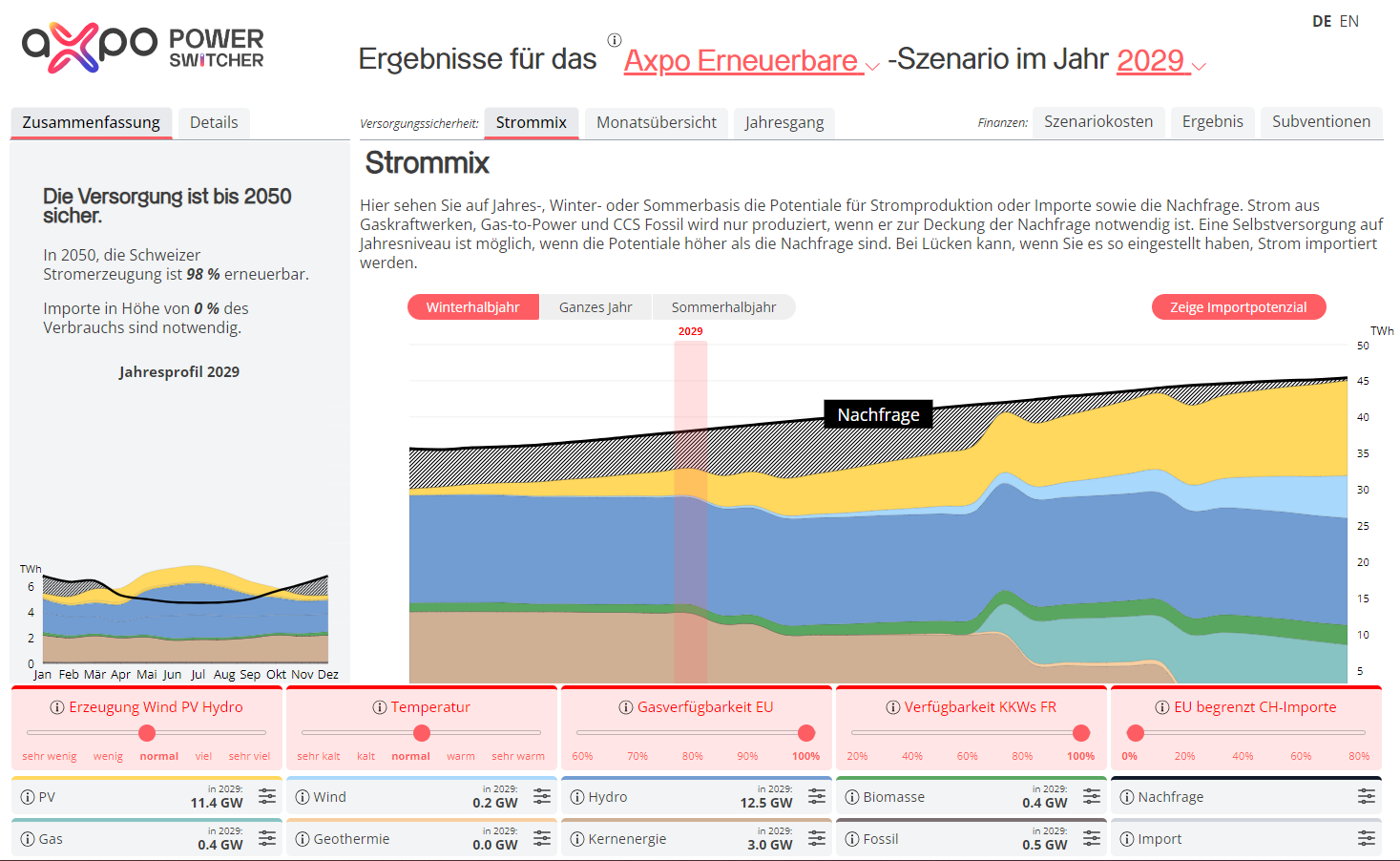

Battery storage solutions The turnkey solution for your energy supply
As a Swiss Engineering, Procurement and Construction (EPC) specialist, we implement customised, modular battery storage solutions that increase your energy efficiency and reduce costs. Flexible, scalable and sustainable – all from a single source and close to you.
Our Solution
Our customised battery storage solutions integrate seamlessly into your existing infrastructure and are optimised for the operation of microgrids. With state-of-the-art technology, standard components and our own Energy Management System (EMS) developed in Switzerland, we guarantee the highest levels of efficiency and flexibility. Plug & Play, customisable and expandable at any time.
Our expertise - your benefits
-
Tier 1 suppliers
with quality components
-
Own Energy Management System (EMS)
developed in Switzerland
-
Swiss engineering
across all SIA phases
Energy Management System (EMS)
The Axpo EMS is the heart of the battery storage system. The EMS determines the state of charge and initiates when the battery is charged or discharged in line with grid requirements. The EMS also continuously provides the system’s operating status. All of this information can also be monitored from the customer’s control centre.
Features of the Axpo EMS
- Microgrid control system
- Island mode operation in case of grid failure
- Operator interface
- Remote access
- Remote monitoring and maintenance (SLA)
- Cyber security compliant with ISO 27001
- Human Machine Interface
- Alarm server
- Energy management in the area grid
Engineering-Procurement-Construction (EPC)
We connect your battery storage system to the grid in just 6 months - efficiently and smoothly. From the initial discussion and detailed planning to implementation and ongoing operation, we are at your side with our experience and expertise. You can rely on a clearly structured process that quickly and reliably makes your energy solution reality.
Services
Benefit from a guarantee of up to 10 years, personal support directly from Switzerland and a partner who speaks your language.
- 24/7 remote monitoring and hotline
- Preventive maintenance and fast troubleshooting
- Intervention time < 12 h
- Central spare parts pool in Switzerland
- Warranty and service
- 5 to 10 years
Download
- BESS Broschüre 2025 View Send email Download
- BESS Brochure 2025 – english View Send email Download
- Brochure BESS 2025 – français View Send email Download
Contact us
Whether you need advice or an individual quote, we will be happy to assist you personally. Simple, direct and uncomplicated.




.jpg)





